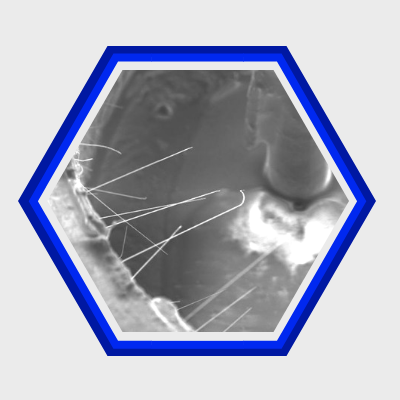Tin Whiskers

.png)
.png)
Tin Whiskers are electrically conductive, hair like structures that can grow on surfaces that have been electroplated with pure Tin. This causes failures within electronic components and represents a challenge for manufacturers looking to eliminate lead from production whilst keeping failure rates low. Tin Whiskers are something of a mystery, growing seemingly at random, so what do we know about them and how can we prevent their growth?
What is RoHS?
The Restriction of Hazardous Substances is a directive which aims to cut the widespread use of toxic chemicals such as Lead and Cadmium. This directive affects nearly every piece of electronics manufactured today and so components such as Connectors, Switches and Relays must all now be Lead Free.
Why Does This Affect Tin Plating?
Traditionally Tin Plating was alloyed with a small percentage of Lead (usually around 3%) and used as a low cost way of inhibiting Oxidation. Without the inclusion of this Lead Alloy, the formation of whiskers takes place.
Why are Tin Whiskers So Troublesome?
Tin Whiskers are almost invisible to the naked eye and are about 10-100 times thinner than a human hair. They can bridge relatively large distances between electrical leads and in doing so can short out conductors. The unusual thing about Tin Whiskers is there is no set way in which they grow. Sometimes a whisker can grow in a matter of hours, and sometimes over a matter of years. Despite vast amounts of research we still don’t fully understand what activates this growth. In 2005, a random ‘full turn off’ signal at the US Millstone Nuclear Plant was attributed to a Tin Whisker.
How Can Whiskers Be Avoided?
Although we do not know much about what activates their growth, we do understand many of the elements which may cause Tin Whiskers to grow. Tin Whiskers are often caused through stress wither within the plating process or through the bending/stretching/clamping of the part.
In terms of stresses within the plating process itself, Bright Acid Tin Plating relies on the addition of brighteners, which causes more stress during the process and so Dull or Matte Tin Plating is often specified by electronics manufacturers. Other techniques to mitigate Tin Whiskers have included adding more process steps in manufacturing including an undercoat of Copper and Nickel or an overcoat of Electroless Nickel. Specifications have been developed to reduce the risk of Whisker formation.
Silchrome Plating offer pure tin plating to a variety of industries including the microwave, radio frequency and electronics industries. We are ISO 9001 and 14001 certified and carry out a range of metal finishing processes from our modern facility in Leeds, West Yorkshire.




